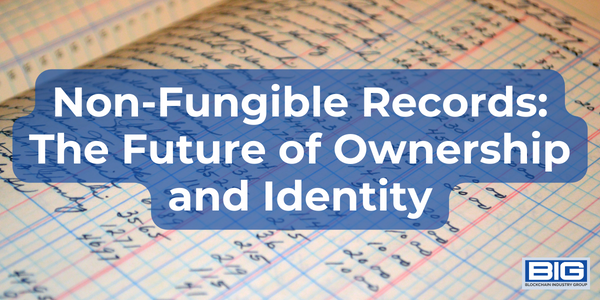
In the digital age, the concept of ownership and identity verification has undergone a massive transformation. With the rise of blockchain technology, the traditional methods of verifying ownership and identity have been challenged, leading to the emergence of non-fungible records.
What are Non-Fungible Records?
Non-fungible records are unique digital assets that cannot be replicated, divided or interchanged with other digital assets. They are unique and distinct from one another, much like a fingerprint or a snowflake. Unlike fungible assets, such as cryptocurrencies like Bitcoin, which are interchangeable and have the same value, non-fungible assets are one-of-a-kind and have unique values.
What’s the Difference: Non-Fungible Records and NFTs?
A non-fungible record and an NFT (Non-Fungible Token) are related but distinct concepts. A non-fungible record refers to any unique digital asset that cannot be replicated, divided, or interchanged with other digital assets. It is a broader term that encompasses a wide range of unique digital assets, including NFTs.
An NFT, on the other hand, is a specific type of non-fungible record that is stored on a blockchain and verified using cryptographic methods. It represents ownership or proof of authenticity of a piece of content such as a digital artwork, music, or a video. An NFT is a digital certificate of ownership that is stored on a blockchain, providing a secure and transparent record of ownership.
An NFT is a specific type of non-fungible record, while non-fungible records refer to any unique digital asset. Both concepts share the characteristic of being unique and distinct from one another, but NFTs are unique in that they are stored on a blockchain and verified using cryptographic methods.
The Benefits of Non-Fungible Records
One of the major benefits of non-fungible records is the ability to verify ownership and authenticity of digital assets. With blockchain technology, ownership and authenticity can be verified and recorded in a transparent and immutable manner, making it much more secure than traditional methods.
In addition, non-fungible records can also help reduce fraud and counterfeiting. For instance, in the art world, it’s not uncommon for paintings to be duplicated and sold as the original. With NFTs, the ownership and authenticity of a piece of art can be verified, reducing the risk of fraud.
Moreover, non-fungible records also offer a new way of monetizing digital assets. For example, an artist can sell their digital creations as NFTs and receive payment directly from the buyer. This eliminates the need for intermediaries and allows for a more streamlined and efficient transaction.
The Future of Non-Fungible Records
The potential applications of non-fungible records are vast and far-reaching. From verification of ownership and authenticity in the art world to the creation of virtual real estate in gaming, the possibilities are endless.
In addition, non-fungible records can also be used in the realm of identity verification. With blockchain technology, individuals can store their personal information in a secure, decentralized manner, making it much more difficult for identity theft to occur.
Blockchain Dominance: Competing Countries
—
Blockchain vs. Bitcoin: What’s the Difference?
—
Blockchain, AI, Web3, & Metaverse’s Use Cases
Furthermore, non-fungible records can also be used to track the supply chain of goods and services. For example, a company can use non-fungible records to track the journey of a product from production to delivery, making the supply chain more transparent and efficient.
Conclusion
Non-fungible records represent a significant shift in the way we verify ownership and identity in the digital age. With blockchain technology, we can create a more secure and transparent system for verifying ownership and authenticity, reduce the risk of fraud and counterfeiting, and open up new ways of monetizing digital assets. The future of non-fungible records is bright, and it will be interesting to see how they continue to evolve and shape our understanding of ownership and identity in the digital world.



